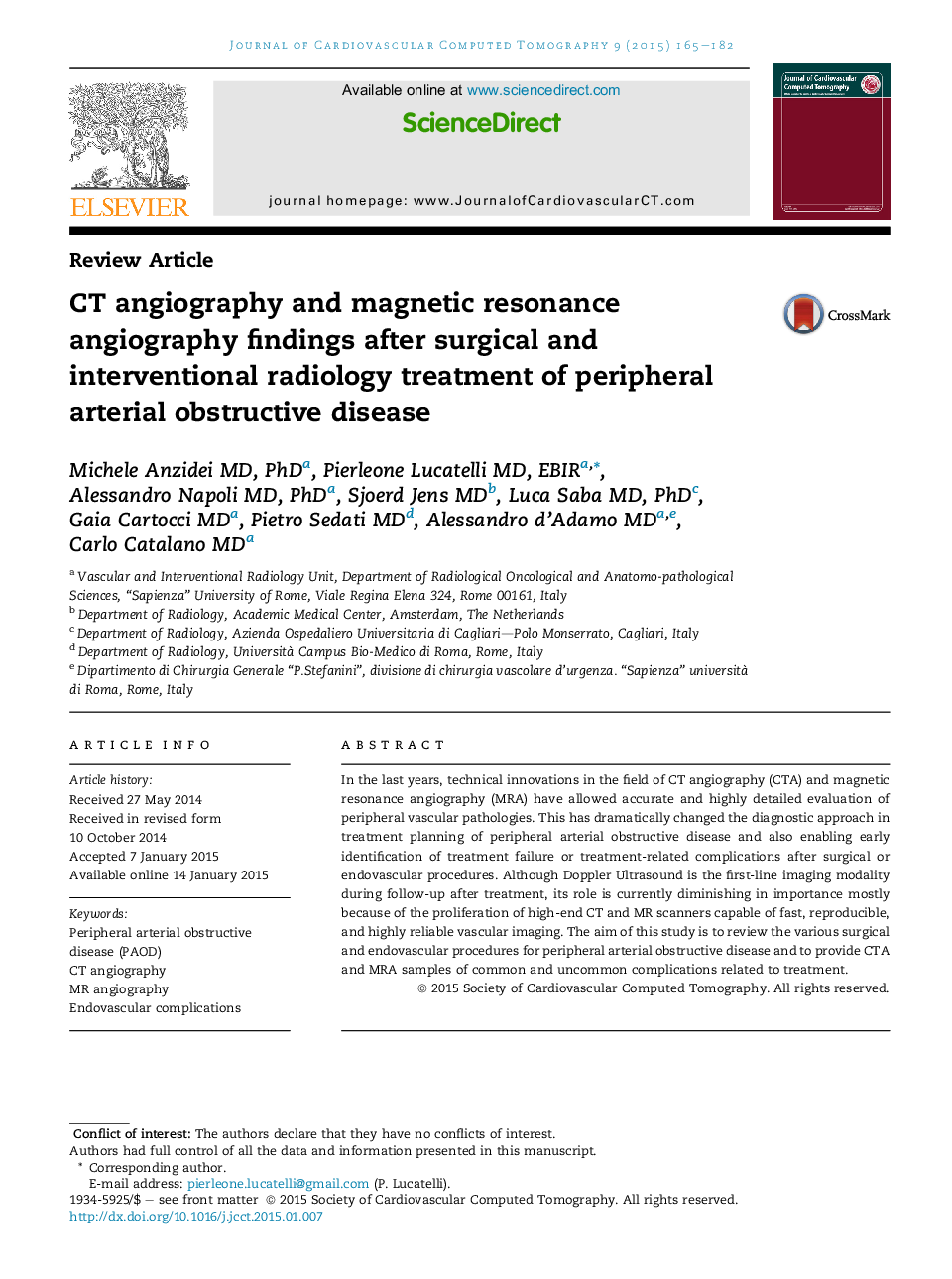| Article ID | Journal | Published Year | Pages | File Type |
|---|---|---|---|---|
| 2964536 | Journal of Cardiovascular Computed Tomography | 2015 | 18 Pages |
•The role of Doppler ultrasonography in patients' follow-up after treatment is currently diminishing in importance.•CTA and MRA allow identification of complications after surgical or endovascular therapy for PAOD.•CTA and MRA roles in diagnosis of treatment related complications are reviewed.•The most common surgical and endovascular treatment for PAODs are described.
In the last years, technical innovations in the field of CT angiography (CTA) and magnetic resonance angiography (MRA) have allowed accurate and highly detailed evaluation of peripheral vascular pathologies. This has dramatically changed the diagnostic approach in treatment planning of peripheral arterial obstructive disease and also enabling early identification of treatment failure or treatment-related complications after surgical or endovascular procedures. Although Doppler Ultrasound is the first-line imaging modality during follow-up after treatment, its role is currently diminishing in importance mostly because of the proliferation of high-end CT and MR scanners capable of fast, reproducible, and highly reliable vascular imaging. The aim of this study is to review the various surgical and endovascular procedures for peripheral arterial obstructive disease and to provide CTA and MRA samples of common and uncommon complications related to treatment.
